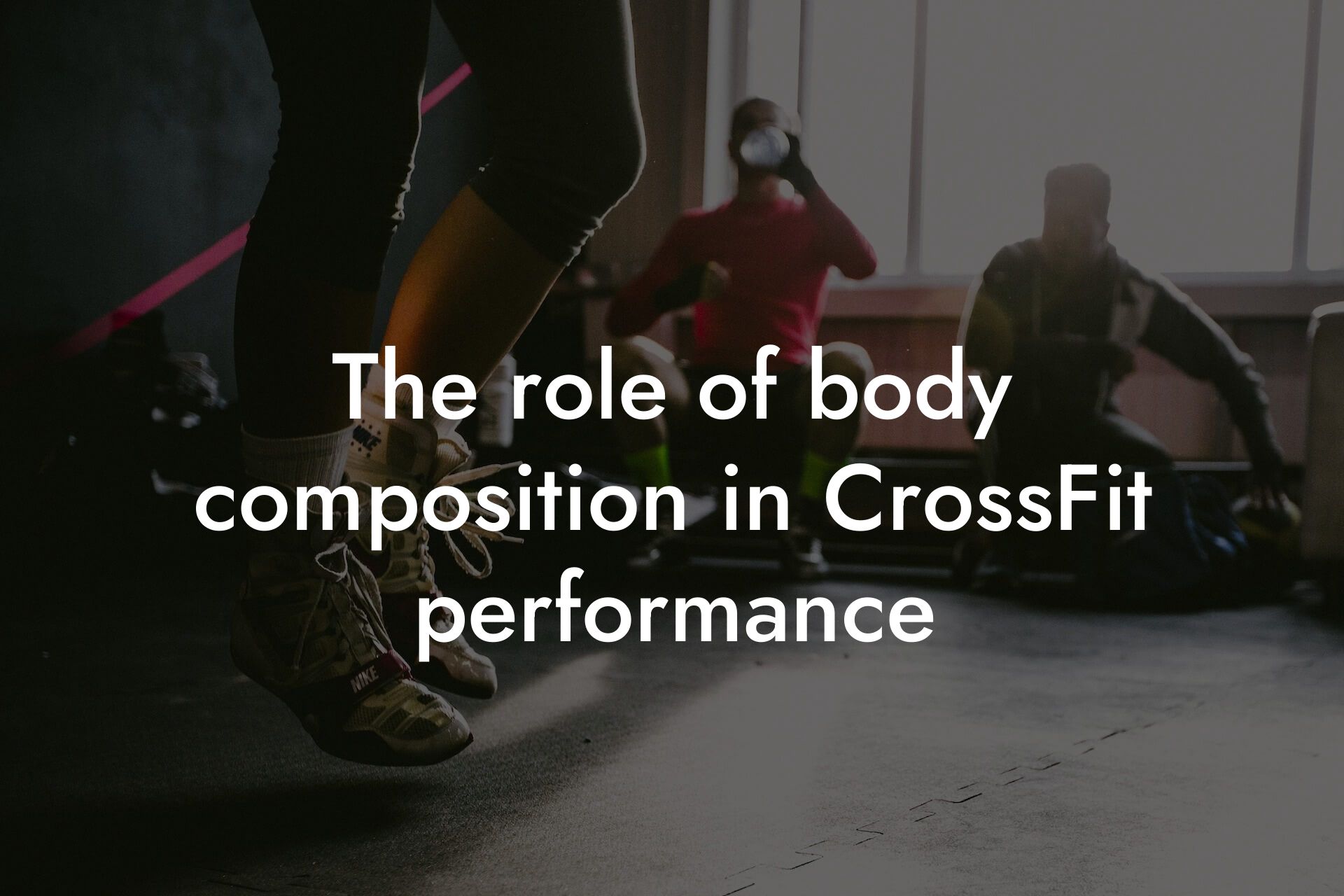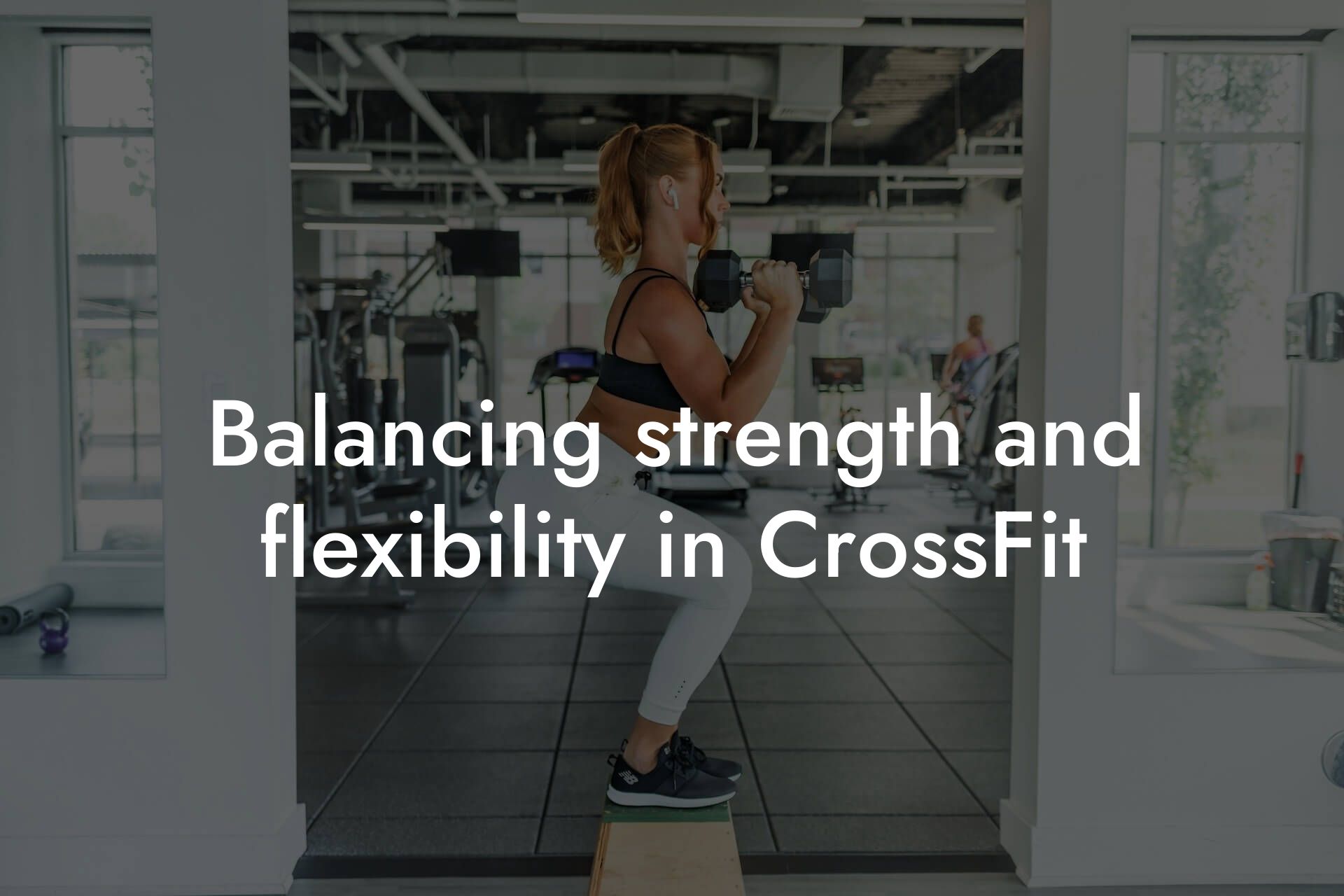As a high-earning professional, you understand the importance of maintaining a healthy and fit physique. CrossFit is an excellent way to achieve this goal, but it can also come with a risk of injury if not approached correctly. At Tano Performance Group, we want to ensure that you have all the information you need to prevent injuries and get the most out of your CrossFit training. In this article, we will provide you with a comprehensive guide on how to prevent injuries in CrossFit.
Table of Contents
Understanding the Risks of CrossFit
CrossFit is a high-intensity workout that involves a combination of strength training, cardio, and gymnastics. While it can be an excellent way to improve your overall fitness, it can also put a lot of stress on your muscles and joints. Common injuries associated with CrossFit include muscle strains, tendonitis, and joint problems. In severe cases, CrossFit injuries can lead to chronic pain, surgery, and even long-term damage.
Warming Up and Cooling Down
A proper warm-up and cool-down are essential for preventing injuries in CrossFit. A warm-up prepares your muscles for the upcoming workout, increasing blood flow and reducing the risk of muscle strains. A cool-down, on the other hand, helps to reduce muscle soreness and improve recovery. Make sure to include dynamic stretching exercises such as leg swings, arm circles, and hip openers in your warm-up routine. After your workout, take the time to cool down with static stretches that target the muscles you used during your workout.
Proper Form and Technique
One of the most common causes of injury in CrossFit is poor form and technique. When you're performing exercises with incorrect form, you're putting unnecessary stress on your muscles and joints, increasing the risk of injury. Take the time to learn proper form and technique for each exercise, and don't be afraid to ask for guidance from a coach or trainer. Focus on slow and controlled movements, and avoid jerky or bouncy movements that can put unnecessary stress on your joints.
Scaling and Modifying Exercises
CrossFit workouts are designed to be challenging, but they should never be so challenging that they put you at risk of injury. If you're new to CrossFit or struggling with a particular exercise, don't be afraid to scale or modify it to suit your fitness level. Scaling involves reducing the weight or intensity of an exercise, while modifying involves changing the exercise altogether. For example, if you're struggling with pull-ups, you could scale the exercise by using a resistance band or modifying it by performing assisted pull-ups.
Listening to Your Body
One of the most important things you can do to prevent injuries in CrossFit is to listen to your body. If you're feeling fatigued or experiencing pain during a workout, stop immediately and rest. Don't push through the pain, as this can lead to further injury. Instead, take the time to recover and come back to the exercise when you're feeling stronger.
Strengthening Your Core and Glutes
Your core and glutes are the foundation of your body, providing stability and support for your entire physique. Weakness in these areas can lead to poor form and technique, increasing the risk of injury. Make sure to include exercises that target your core and glutes in your workout routine, such as planks, squats, and deadlifts.
Getting Enough Rest and Recovery
Rest and recovery are essential for preventing injuries in CrossFit. When you're not giving your body enough time to recover, you're increasing the risk of overtraining and injury. Make sure to get at least 7-8 hours of sleep per night, and take rest days as needed. You can also use techniques such as foam rolling, massage, and stretching to aid in recovery.
Working with a Coach or Trainer
Working with a coach or trainer can be an excellent way to prevent injuries in CrossFit. A coach or trainer can provide you with personalized guidance and feedback, helping you to improve your form and technique and reduce the risk of injury. They can also help you to develop a workout routine that's tailored to your fitness level and goals.
Using Technology to Your Advantage
At Tano Performance Group, we understand the importance of using technology to your advantage. Our DEXA machine provides a comprehensive body assessment, giving you a detailed picture of your body composition, bone density, and other health metrics. This information can be used to tailor your workout routine and nutrition plan, helping you to achieve your fitness goals while reducing the risk of injury.
Frequently Asked Questions
What are the most common injuries in CrossFit?
As a high-intensity sport, CrossFit is prone to various injuries, particularly in the shoulders, knees, and lower back. Some of the most common injuries include shoulder strains, knee sprains, lower back strains, and overuse injuries such as tendonitis and shin splints. It's essential to take preventative measures to minimize the risk of these injuries.
How can I prevent shoulder injuries in CrossFit?
To prevent shoulder injuries, focus on proper form and technique, especially during exercises like overhead squats and snatches. Strengthen your shoulder muscles through exercises like shoulder blade squeezes, shoulder rotations, and scapular push-ups. Additionally, warm up properly before workouts and incorporate stretching and foam rolling into your routine.
What are the signs of overtraining, and how can I avoid it?
Signs of overtraining include fatigue, decreased performance, and increased risk of injury. To avoid overtraining, listen to your body and take rest days as needed. Gradually increase your workout intensity and volume, and prioritize proper nutrition and recovery techniques like stretching, foam rolling, and sleep.
How can I improve my flexibility and mobility for CrossFit?
Improving flexibility and mobility is crucial for optimal performance and injury prevention in CrossFit. Incorporate stretching exercises like leg swings, arm circles, and hip openers into your warm-up and cool-down routines. Additionally, prioritize exercises that target multiple joints, such as squats, deadlifts, and Olympic lifts.
What is the importance of proper footwear in CrossFit?
Wearing proper footwear is essential for CrossFit, as it can help prevent injuries and improve performance. Choose shoes with a stable sole, adequate cushioning, and a snug fit. Avoid wearing running shoes, as they may not provide the necessary support and stability for high-intensity exercises.
How can I prevent knee injuries in CrossFit?
To prevent knee injuries, focus on proper form and technique, especially during exercises like squats and lunges. Strengthen your knee muscles through exercises like leg press, leg extensions, and leg curls. Additionally, incorporate knee-strengthening exercises like single-leg squats and step-ups into your routine.
What are the benefits of incorporating yoga and Pilates into my CrossFit routine?
Incorporating yoga and Pilates into your CrossFit routine can improve flexibility, balance, and core strength, reducing the risk of injury. These low-impact exercises can also help with recovery and improve overall performance.
How can I prevent lower back injuries in CrossFit?
To prevent lower back injuries, focus on proper form and technique, especially during exercises like deadlifts and Olympic lifts. Strengthen your core muscles through exercises like planks, side planks, and Russian twists. Additionally, incorporate exercises that target the glutes and hamstrings, such as glute bridges and leg curls.
What is the importance of proper nutrition for CrossFit?
Proper nutrition is essential for optimal performance and recovery in CrossFit. Focus on consuming a balanced diet that includes lean protein, complex carbohydrates, and healthy fats. Avoid processed foods and sugary drinks, and stay hydrated by drinking plenty of water throughout the day.
How can I prevent overuse injuries in CrossFit?
To prevent overuse injuries, gradually increase your workout intensity and volume, and prioritize proper recovery techniques like stretching, foam rolling, and sleep. Additionally, incorporate exercises that target multiple muscle groups, and avoid repetitive exercises that may put excessive stress on specific joints.
What are the signs of a concussion, and how can I prevent them in CrossFit?
Signs of a concussion include dizziness, headaches, and confusion. To prevent concussions in CrossFit, wear proper headgear during high-impact exercises, and prioritize proper form and technique. Avoid exercises that involve high-impact landings, and incorporate exercises that improve balance and coordination.
How can I improve my overall strength and endurance for CrossFit?
To improve overall strength and endurance, focus on incorporating compound exercises like squats, deadlifts, and bench press into your routine. Additionally, prioritize high-intensity interval training (HIIT) and incorporate exercises that target multiple muscle groups.
What is the importance of proper warm-up and cool-down routines in CrossFit?
Proper warm-up and cool-down routines are essential for preventing injuries and improving performance in CrossFit. Incorporate exercises that target multiple joints, such as leg swings and arm circles, into your warm-up routine. Additionally, prioritize stretching and foam rolling during your cool-down routine.
How can I prevent shin splints in CrossFit?
To prevent shin splints, wear proper footwear and prioritize proper form and technique, especially during exercises like running and jumping. Incorporate exercises that strengthen the muscles in your lower legs, such as calf raises and ankle mobilization exercises.
What are the benefits of working with a personal trainer or coach in CrossFit?
Working with a personal trainer or coach can help improve form and technique, reduce the risk of injury, and optimize performance. A coach can also provide personalized guidance and support, helping you achieve your fitness goals.
How can I prevent burnout and maintain motivation in CrossFit?
To prevent burnout and maintain motivation, set realistic goals and celebrate small victories. Incorporate variety into your workouts, and prioritize rest and recovery days. Additionally, find a workout buddy or join a CrossFit community to stay motivated and accountable.
What are the signs of poor form and technique in CrossFit?
Signs of poor form and technique include arching your back, letting your knees extend past your toes, and using momentum to complete exercises. To improve form and technique, focus on slow and controlled movements, and prioritize proper alignment and posture.
How can I incorporate injury prevention exercises into my CrossFit routine?
Incorporate exercises that target specific muscle groups, such as shoulder rotations and knee strengthening exercises, into your warm-up and cool-down routines. Additionally, prioritize exercises that improve balance, coordination, and overall strength.
What is the importance of proper recovery techniques in CrossFit?
Proper recovery techniques, such as stretching, foam rolling, and sleep, are essential for optimal performance and injury prevention in CrossFit. Prioritize recovery days, and incorporate techniques like active recovery, such as light cardio and yoga, into your routine.
How can I prevent injuries during high-impact exercises in CrossFit?
To prevent injuries during high-impact exercises, wear proper footwear and prioritize proper form and technique. Incorporate exercises that strengthen the muscles in your lower legs, such as calf raises and ankle mobilization exercises. Additionally, focus on proper landing techniques, and avoid exercises that involve high-impact landings.
What are the benefits of incorporating strength training into my CrossFit routine?
Incorporating strength training into your CrossFit routine can improve overall strength, endurance, and performance. It can also help prevent injuries by strengthening the muscles and connective tissues around specific joints.
How can I prevent injuries during Olympic lifts in CrossFit?
To prevent injuries during Olympic lifts, prioritize proper form and technique, and focus on slow and controlled movements. Incorporate exercises that strengthen the muscles in your shoulders, back, and legs, and avoid lifts that involve high-impact landings.
Here are some related articles you might love...
- The role of body composition in CrossFit performance
- Nutrition strategies for CrossFit athletes
- Balancing strength and flexibility in CrossFit
- How DEXA scans can benefit CrossFit enthusiasts
- The importance of muscle recovery in CrossFit
- How to maintain bone density with CrossFit training
- Improving endurance for CrossFit competitions
- Strength training tips specific to CrossFit workouts
- Reducing body fat for better CrossFit performance
Zak Faulkner
Zak Faulkner is a leading authority in the realm of physical health and body composition analysis, with over 15 years of experience helping professionals optimise their fitness and well-being. As one the experts behind Tano Performance Group, Zak has dedicated his career to providing in-depth, science-backed insights that empower clients to elevate their physical performance and overall health.
With extensive knowledge of DEXA technology, Zak specializes in delivering comprehensive body assessments that offer precise data on body fat, muscle mass, bone density, and overall physique. His expertise enables individuals to make informed decisions and achieve their fitness goals with accuracy and confidence. Zak’s approach is rooted in a deep understanding of human physiology, combined with a passion for helping clients unlock their full potential through personalised strategies.
Over the years, Zak has earned a reputation for his commitment to excellence, precision, and client-focused service. His guidance is trusted by top professionals who demand the best when it comes to their health. Whether advising on fitness programs, nutritional strategies, or long-term wellness plans, Zak Faulkner’s insights are a valuable resource for anyone serious about taking their health and fitness to the next level.
At Tano Performance Group, Zak continues to lead our Content Team revolutionising how professionals approach their physical health, offering unparalleled expertise that drives real results.




